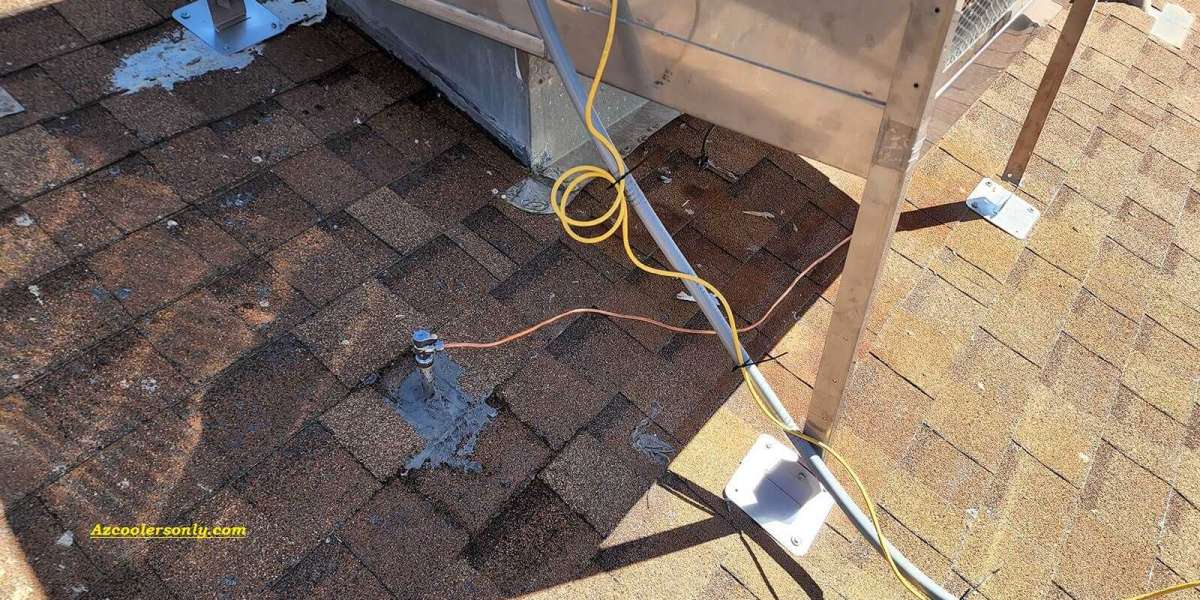A swamp cooler, also known as an evaporative cooler, is an energy-efficient and cost-effective alternative to traditional air conditioning systems. This cooling system is commonly used in arid and hot climates where the air is dry, and humidity is low. Swamp coolers work by using the natural process of evaporation to cool the air, making it ideal for homeowners who want to save on their energy bills and reduce their carbon footprint.
How a Swamp Cooler Works
Swamp coolers work by pulling warm air from the outside and passing it through a series of damp pads. These pads are made of cellulose material and are soaked in water. As the warm air passes through the damp pads, the water evaporates, cooling the air. The cool air is then pushed into the home through a series of ducts or vents.
Unlike traditional air conditioning systems that use refrigerants to cool the air, swamp coolers use only water and a fan to create cool air. This makes them a much more energy-efficient and eco-friendly cooling option. The only energy consumed by swamp coolers is electricity to power the fan and pump water through the pads.
Advantages of a Swamp Cooler
Energy Efficiency: One of the biggest advantages of a swamp cooler is its energy efficiency. Unlike traditional air conditioners that require a lot of electricity to cool the air, swamp coolers use only a fraction of the energy. This makes them an ideal cooling option for homeowners who want to reduce their energy bills and their carbon footprint.
Cost-Effective: Not only are swamp coolers energy-efficient, but they are also cost-effective. They cost much less to purchase and install than traditional air conditioning systems. Additionally, the ongoing maintenance costs are also lower, making them a great long-term investment.
Humidity Control: Swamp coolers are great at controlling humidity levels in the home. As the air passes through the damp pads, it becomes more humid, which is great for people with dry skin and respiratory issues. Additionally, this added humidity can help keep wooden furniture from drying out and cracking.
Eco-Friendly: As mentioned earlier, swamp coolers are much more eco-friendly than traditional air conditioning systems. They use less energy, emit fewer greenhouse gases, and do not require the use of harmful refrigerants.
Easy Maintenance: Maintaining a swamp cooler is relatively easy. The only maintenance required is to regularly change the pads and clean the unit to prevent mineral buildup. This can easily be done by the homeowner, saving money on costly professional maintenance.
Disadvantages of a Swamp Cooler
Limited Use: Swamp coolers are only effective in areas with low humidity. In humid areas, the air is already saturated with moisture, making it difficult for the water to evaporate and cool the air.
Water Consumption: Swamp coolers require a constant supply of water to keep the pads damp. This can be a problem in areas with water shortages or high water bills.
Regular Maintenance: While the maintenance required for a swamp cooler is minimal, it still needs to be done regularly. Neglecting maintenance can lead to mineral buildup and reduced efficiency.
No Temperature Control: Unlike traditional air conditioners that allow you to set a specific temperature, swamp coolers do not offer temperature control. The temperature of the air is dependent on the outside air temperature and humidity levels.
When to Use a Swamp Cooler
Swamp coolers are best used in hot and dry climates where humidity levels are low. They are not effective in humid areas, where the air is already saturated with moisture. Additionally, swamp coolers are not suitable for people with respiratory issues, as the added humidity can exacerbate their symptoms.
Conclusion
Swamp coolers are a cost-effective and energy-efficient cooling option for homeowners living in hot and dry climates Regenerate response. Read More








